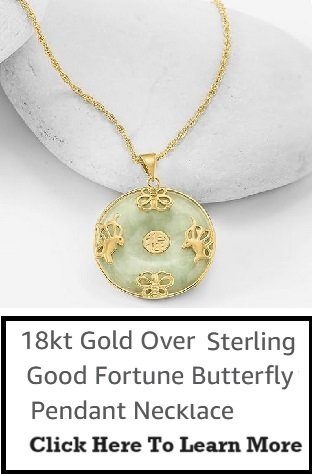When purchasing gold jewelry, one of the most important decisions you'll face is choosing between 18kt and 14kt gold. Both are popular options, each with its unique advantages and characteristics. Understanding the differences between 18kt and 14kt gold can help you make an informed choice that aligns with your style, budget, and needs. In this article, we'll explore the key differences between 18kt and 14kt gold and provide guidance on how to choose the right option for you.
Understanding Gold Karats
The term "karat" (abbreviated as "kt") refers to the purity of gold, indicating the proportion of pure gold in the alloy. Pure gold, also known as 24kt gold, is too soft for most jewelry applications, so it is alloyed with other metals to increase its strength and durability.
- 24kt Gold: 100% pure gold
- 18kt Gold: 75% gold, 25% other metals
- 14kt Gold: 58.3% gold, 41.7% other metals
What Does This Mean?
The higher the karat, the more gold the alloy contains. This difference in composition affects not only the color and appearance of the gold but also its durability, price, and suitability for different types of jewelry.
1. Color and Appearance
18kt Gold
18kt gold has a higher gold content, giving it a richer, warmer color that many people find more appealing. The 75% gold content gives it a luxurious, bright yellow hue, making it an ideal choice for those who prefer the classic look of gold.
14kt Gold
14kt gold has a slightly paler color compared to 18kt gold due to the higher proportion of alloyed metals. While it still has the warm tones associated with gold, the additional alloys can give it a slightly more muted appearance, which some people prefer for its subtlety.
Which to Choose?
- 18kt Gold: Choose 18kt gold if you prefer a richer, more vibrant gold color.
- 14kt Gold: Opt for 14kt gold if you like a more subdued gold tone or if you want a balance between the traditional gold appearance and added durability.
2. Durability and Strength
18kt Gold
With its higher gold content, 18kt gold is slightly softer than 14kt gold. While it’s still durable enough for most jewelry, it may be more prone to scratches and wear over time, especially if worn daily.
14kt Gold
The higher proportion of alloyed metals in 14kt gold makes it more durable and resistant to scratches and dents. This makes 14kt gold a popular choice for rings and other pieces that are subject to frequent wear and tear.
Which to Choose?
- 18kt Gold: Choose 18kt gold for jewelry that’s more for special occasions or if you prefer a richer color and are willing to handle it with care.
- 14kt Gold: Opt for 14kt gold if you need a more durable option for everyday wear, such as rings, bracelets, or items likely to be exposed to frequent handling.
3. Price Considerations
18kt Gold
Due to its higher gold content, 18kt gold is more expensive than 14kt gold. This makes it a luxurious option, often associated with high-end jewelry and designer pieces. However, the investment in 18kt gold can be worth it for its beauty and lasting value.
14kt Gold
14kt gold is more affordable, offering a balance between quality and cost. It provides the look of gold without the premium price tag of 18kt, making it a popular choice for those who want beautiful jewelry on a budget.
Which to Choose?
- 18kt Gold: Choose 18kt gold if you’re looking for a higher-end, more luxurious piece and are willing to invest more in your jewelry.
- 14kt Gold: Opt for 14kt gold if you’re budget-conscious but still want a beautiful, durable piece of jewelry.
4. Allergy Considerations
18kt Gold
Because 18kt gold has a higher proportion of pure gold and fewer alloyed metals, it is less likely to cause allergic reactions. This makes it a better option for those with sensitive skin or metal allergies.
14kt Gold
14kt gold contains more alloyed metals, which can increase the likelihood of an allergic reaction, particularly for individuals sensitive to nickel or other common alloys. However, many 14kt gold pieces are now made with hypoallergenic alloys, so this is less of an issue than it once was.
Which to Choose?
- 18kt Gold: Choose 18kt gold if you have sensitive skin or a known allergy to certain metals.
- 14kt Gold: If you opt for 14kt gold, look for pieces made with hypoallergenic alloys to reduce the risk of irritation.
5. Symbolism and Sentiment
18kt Gold
18kt gold is often seen as more luxurious and prestigious, making it a popular choice for engagement rings, wedding bands, and heirloom pieces. Its higher gold content symbolizes purity, commitment, and timelessness.
14kt Gold
While slightly less prestigious, 14kt gold is still a popular choice for meaningful jewelry. Its durability makes it ideal for pieces meant to be worn daily, such as wedding bands, and it is often chosen for its practicality.
Which to Choose?
- 18kt Gold: Choose 18kt gold for pieces with significant sentimental value or if you want a more luxurious, symbolic piece.
- 14kt Gold: Opt for 14kt gold for meaningful pieces that need to stand up to daily wear and tear while still offering beauty and symbolism.
Conclusion
Choosing between 18kt and 14kt gold depends on your personal preferences, lifestyle, and budget. If you value a richer color, higher gold content, and a touch of luxury, 18kt gold is the ideal choice. On the other hand, if durability, practicality, and affordability are your priorities, 14kt gold may be the better option. Both 18kt and 14kt gold have their own unique advantages, and either choice can make a stunning addition to your jewelry collection. Ultimately, the best choice is the one that aligns with your needs and personal style.
18kt Gold Jewelry Related Articles
- Choosing Between 18kt and 14kt Gold: What’s the Difference?
- How to Care for Your 18kt Gold Jewelry: Tips for Longevity
- How to Match 18kt Gold Jewelry with Your Wardrobe: Style Tips
- How to Spot Genuine 18kt Gold Jewelry: A Buyer’s Checklist
- Stylish Ways to Wear 18kt Gold Jewelry for Every Occasion
- The History and Significance of 18kt Gold in Fine Jewelry
- The Top 5 Trends in 18kt Gold Jewelry for 2024
- The Ultimate Guide to Buying 18kt Gold Jewelry: What You Need to Know
- Top 10 Timeless 18kt Gold Jewelry Pieces Every Woman Should Own
- Why 18kt Gold Jewelry is the Perfect Investment for Your Collection


